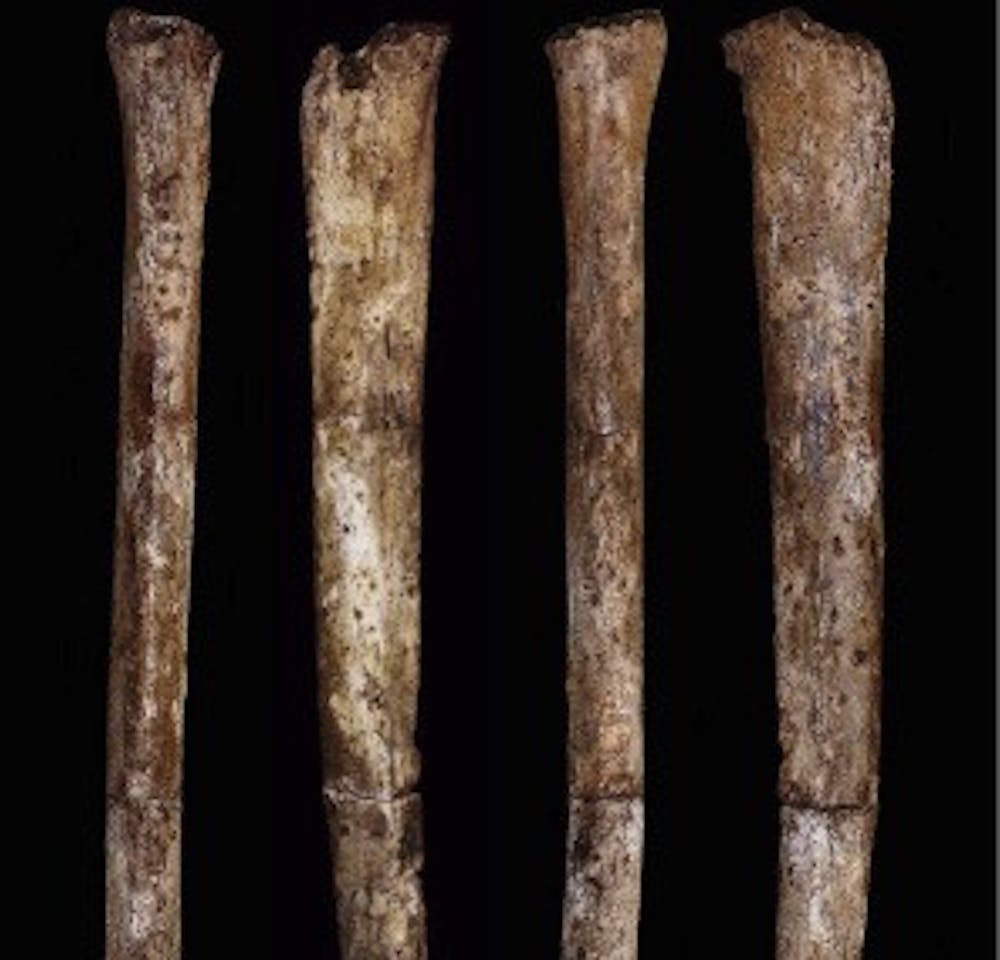By ELLI TIAN
Anthropologists have announced the discovery of Homo naledi, a new hominin that could have been an ancestor of all modern-day humans. Recently, 1,550 bones from the new species were recovered from the Rising Star Cave located near Johannesburg, South Africa. Analysis indicates that the bones belong to a species that has a similar body structure to modern day Homo sapiens, but that is significantly shorter and has a brain size closer to that of chimpanzees.
A team of international scientists, led by professor Lee Berger of the Evolutionary Studies Institute at the University of Witwatersrand in South Africa, excavated the bones from the cave over a period of two years. Six “underground astronauts” were hired to squeeze through the seven-inch opening that led to where the remains were deposited. The fossils, which included teeth, skulls and a complete hand, were numbered and determined to have come from at least 15 individuals of varying ages.
The hominins that are now classified in the genus Homo split from those in the genus Australopithecus approximately 2.8 million years ago. Extinct members of the genus include Homo habilis, Homo erectus and Homo neanderthalensis. All of these species can be characterized by their successively larger brains, smaller jaws and fully upright lifestyle.
A reconstruction of a Homo naledi skeleton shows many characteristics that link it to Homo rather than any other genus. The hominin’s hands are straighter and built for more precise object manipulation. The skull is also more slender and similar in shape to modern-day human skulls, though it is only about half the size of modern skulls. Finally, the Homo naledi’s teeth are small, suggesting that Homo naledi had a specialized diet that did not require very much chewing.
However, identifying the exact age of the species has been difficult. Carbon-14 dating, which is traditionally used to determine the age of specimens, would destroy some of the bones. In addition, the high density of bones at the excavation site suggests that the remains were placed there intentionally, so dating of surrounding material or the cave sediment may not be precise enough.
Despite its similarities to other species in Homo, the Homo naledi fossils possessed enough unique characteristics to warrant its categorization as a new species. The difficulty now lies in figuring out what these physical similarities and differences say about Homo naledi’s exact relationship to Homo sapiens.
Some anthropologists suspect that the small cranial size of Homo naledi marks them as a close descendant of Australopithecus, an extinct hominin from which the genus Homo evolved. They point to some of the more primitive features of the fossils, including wider-built shoulders and a flared pelvis.
Yet others claim that Homo naledi must have evolved more recently since there are too many similarities between the discovered bones and Homo sapiens to have occurred by chance.
Only one square meter of the cave has been excavated so far, and the team suspects that there may still be more remains buried inside. However, until the current fossils are dated, no one can know for sure what the discovery of Homo naledi says about human evolution.





